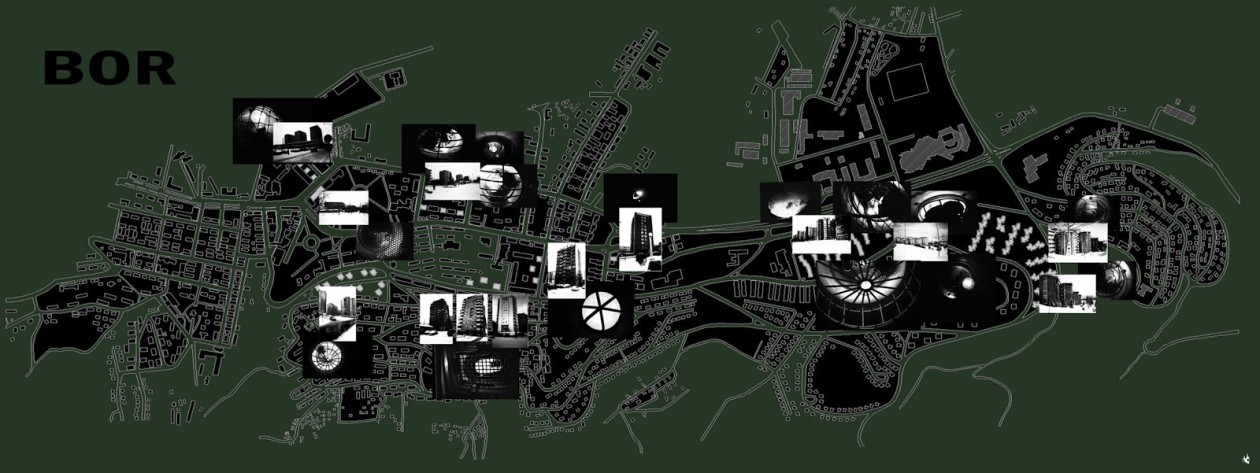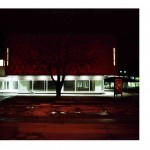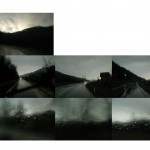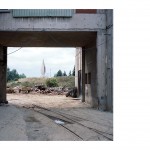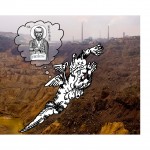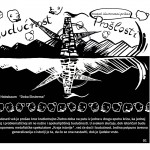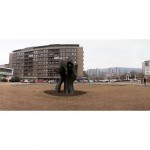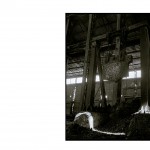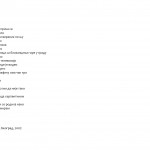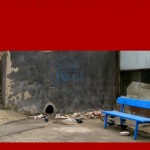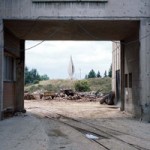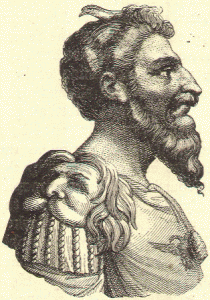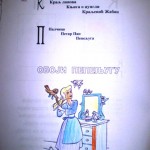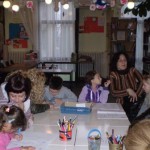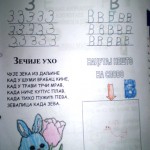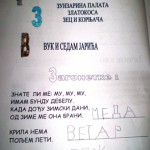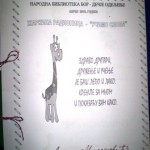Dragan Stojmenovic
The Public Library Bor
Digitizing of the Non-Book Material and Cultural and Public Activities of the Public Library Bor: Effects and Implementation of New Projects
Summary
In the introduction, this paper will be the survey of the sources’ potentiality for digitizing, so as of the preparations, concepts and methodology of managing of the project. Further, I will demonstrate and analyize previous resultes and effects of this project, and I will describe the effects of the promoting campagne in the local community, so as the plans for presentation and uses of the digitalized materials. In the conclusion, new projects of the Departemnet of the Local Collection will be described, „Alternative urbanisation in the eyes of the Others“, the project that will be founded on the previously digitalized materials as its base, and that will induce the production of new visual materials. Beside this project mentioned above, there is another, which should be some sort of implementation of the project of digitizing in the public space, and which aims, apart from the presentation of the digitalized material, at making people aware of the existance of the special tradition of visual documentation of all aspects of the public life in Bor.
Content:
- Introduction
- The project of digitizing
- Industrial Blues
- Carrying the Relics of the Intovert Bird
- Intercultural dialogue: Alternative Urbanisation in Bor in the Eyes of the Other
- The presentation of the project of digitizing of non-book material and cultural and public activities of the Public Library Bor in public spaces
- Rezime na srpskom
The libraries’ departments of local collections are specific, having their own guidelines for collecting, preserving and lending all sorts of material published in the local area or about it, material concerning any scientific topic, weather from natural or humanistic science, arts or local private and public life generally. Therefore, the departments of local collections have to be organized according to certain standards for classifying and processing of different types of libraries’ material.
According to the basic topic of this paper, I will firstly, depicting the structure of the collection and the characteristics of different sorts of material, explicate the strategic importance of non-book material and cultural and public activities of the library, chosen for digitizing. Above all, the primary aim of digitizing is concerned with the accessibility and usefulness of the material, with special importance of availability of the unique one. It is concerned with the medias that, in their basic forms, need to be transformed by means of technique and technology so to become readable, which is the case with, for example, photographic negatives or dia-positives. Another important characteristic of digitizing is the possibility of recording the public and cultural activities of the library on digital media, which makes these activities reproductive and easily accessible.
The Department of Local Collections in the Public Library Bor has been founded in 1986, according to all official guidelines and instructions, and following all useful experiences of other libraries. Officially, it started working in 1987. The aims, activities and tasks of collecting, processing, preserving and loan, so as of the promoting the material and information concerned with Bor and its environment, and with wider area – Timocka krajina – were proposed. The action of collecting has started. Some resources were acquired thanks to the institutions, and some publications were extracted from others collections of the Public Library Bor.
– Collection of the monographic publications whose authors have or had any kind of relationship with local community, the publications published on our territory and the publication about it (format I-II: 1588 items, format IV: 193 items)
– Periodicals – 185 volumes plus 465 items of which an inventory have not yet been taken
– Manuscripts and administrative documents – 180 items
– Cartographic materials – 98 items
– Programs of manifestations – 784 items
– Press clippings from non-local periodicals – 4529 items
– Postcards – 194 items
– Negatives – 11512 (including digitalized negatives and digitalized photos and negatives from private collections whose owners have given their permission for digitizing and presentation of their material)
– Film rolls – 7 items
– Placards – 203 items and
– Ephemera
All sorts of catalogue, alphabetical, title, catalogue by subject heading, have been managed regularly and are accessible for the users. The Local Department has its separate space and is under special protection. Therefore, as a colleague Slobodan Jovanovic has said, “the search for the historical and cultural identity of the town” has started. That identity, the object of search, had not been constructed thus far, or had existed only in the eyes of the strangers, workers and engineers who had been hoping that their residence on this territory would have been temporary. Following the traces preserved in the collections of The Local Department, one can see that these traces lead in different directions. Not only did the librarians left these traces, but also the people in different way very important for local community:
The concept and the methodology of the project are based on the most detailed statistical analyzes of material planned to be digitalized, on selection and valorization of this material, on meticulous plan according to existing guidelines for digitizing. This is in tight connection with specifying the priorities for preserving and presentation. Detailed explication of the project certainly has fostered tight connection between above sketched methodological steps and the rethinking of the possibilities for presentation. Therefore, one of the most important expertise was the analysis of the documental value of visual materials. Cultural and historical value of the material that would be digitalized was also considered. From the beginning, it was clear that the digitizing was not the final way of preserving and protecting the priorities, but one of the best ways of their public presentation. Therefore, it is equally important to consider the means of preserving, processing and presenting both the original and the digitalized material and sources.
The project of digitizing in The Public Library Bor was managed according to PULMAN guidelines for digitizing. These guidelines propose some very important points of preparing and realizing the digitizing of various sources. The advices, technical support and help of the National Library of Serbia were of considerable importance. When defining the priorities for digitizing we have followed certain criteria:
– Unique visual materials for which there are no negatives
– Negatives that have not been previously developed, or in any other way published
– Old and rear material
To define the priorities according to above-mentioned criteria and according to the need of the library and its activities means to define the order in which the chosen sources would be digitalized. When we talk, for example, about the collections of negatives, one of the most important aspects of digitizing is the preparation of the materials for scanning. This preparation is, also, the first step of protecting these sources, because it consists of cutting rolls of negatives into strips with six images, which are afterwards put into suitable protective carton pockets. The presentation of thus digitalized sources will be realized as making prints for expositions, prints on paper, of course, which, by now, turns to be the most durable media.
To sum up: the content, the age and the rarity of the materials are the basic criteria for valorization and selection of sources that would be in this way preserved and presented. In the absence of any other generally supported methodologies, we use the PULMAN guidelines as “standards” for digitizing and theirs advices about the devices and formats.
– For negatives: scanning in tiff format with the resolution of at least 1200 dpi and 24 bit color depth
– For users or for digital presentation: GIF or JPEG format with the resolution of at least 300 dpi.
– For videos: DV or others available video format.
– For non-visual materials, such as audio recording, we will use special equipment with digital input that will enable WAW format.
The bibliographic description of the digitalized source will include link to the record in the Cooperative Bibliographic Database and various metadata such as the description of original source, its format and the description of the collection it belongs, thesaurus in case of electronic presentation. The protection of the copyright in case of use of the digitalized sources will be the obligation of the library and the user, according to the practice of the National Library of Serbia. The protection of the files will be provided by restricted access to the row formats or by inscribing the library’s logo as watermark in the file. Special form of protection will be copying files on the DVD for offline use, on the users’ personal computers in the library, and making numerous copies of the whole collection on the extern hard discs. After the digitizing has been finished, we will offer these extern hard discs to the National Library of Serbia, so as to the various partner institutions, donors and associates such as RTB Bor, The Museum of Mining and Metallurgy in Bor, The Museum of Science and Technique in Belgrade, The Museum of Applied Arts and so on. The process of the work, that is the coordinating of the bibliographic processing of the non-book material and its digitizing, has been set by the systematization of the working positions in the library, so that the both aspect of the work should be optimal. A librarian or a soldier in civil service works on technical preparation and the other librarian has to evaluate, choose, scan and process the material. There are several aspects of protection and safekeeping of processed material: the very preparation of the negatives, for example, is a way of protection, because we cut the strips of negatives into pieces and put these fragments into carton divided into suitable pockets. On the carton there are data about that strip: the number of pieces we cut it into; the number of snapshots (images) it consists of; original signs of the negatives. After scanning, we write down on every pocket the number of scans made out of every negative and similar data. Approximate deadline for digitizing of non-book material, based on the dynamics of the very process, is six years. The digitizing of the cultural and public activities in the Public Library Bor is a permanent task, and will be continued in our own production. The framework for the discussion of the maintenance and, accordingly, the profitability of this investment should be the cultural politics of the town, so as the possibility of connection with the various institutions and other projects, not just in the town, but, also, in the whole country and wider. Our effort is additionally justified by our entrance into the national and world wide initiated projects of digitizing of cultural inheritance. Above all, this project enable continuous recording of cultural and public activities of the library in the very library and with own technical support, for which, until now, other persons have been engaged and payed. Only one person, the librarian of the Department of Local Collection in the Public Library Bor, is by now in charge of this project and its maintenance.
The basic aim of this project is the implementation of new tendencies in the library and information science, that is, the accomplishing and fulfillment of library’s activity in a modern way. Non-book material, which is mostly visual, is very suitable for promotions, presentations and exhibitions. Therefore, we have planned thematic expositions or the public discussion on the topics that have been meticulously photo-documented, such as: public life in the town during the past; public works; politics and industry; cult of personality; workers’ everyday life, and so on. Printing previously unpublished and now scanned negatives for these expositions will enrich the collection of photography in the library. Besides, this project, as a kind of promo campaign, should encourage people who possess valuable material – photos, negatives, manuscripts, various documents, postcards etc. – to entrust scanning and the use of the digital versions of their private collections for presentations, expositions and various artistic or other projects to us. For example, we have already carried out an educative program – Introducing the most important homeland people: Vane Bor. The scanning of the private collections of photos and negatives is in the progress, so as the project aiming at fostering an intercultural dialog, Alternative urbanization in the eyes of the others, in cooperation with the REX cultural centre and with the financial support of the Ministry of Culture of Serbia. Several already planned programs are in direct connection with the project of digitizing, such as presentations and exhibitions of the digitalized material in public spaces, or the cooperation with local photographers and amateurs who would like to exhibit their photos in the library. In this way, the library would acquire new, up-to-date and relevant visual material.
The Industrial Blues was a pilot-project, that anticipated the project of digitizing – presentation and exhibition of the photo documentation which used to belong to the worker’s newspaper Kolektiv (“The Collective”). In 2007, in February, this rich collection of photo-documentation was entrusted to the Department of Local Collections. According to official record, made after close inspection and classification, this valuable collection consists of 4881 negatives in rolls, 244 dia-positives of 60mm size, 46 laminated photography, 1469 phot5os of various size, 7 film rolls, 22 contact albums and microfilms.
This collection has completely fit into existing concepts of collections. Therefore, we wrote the description of the project of digitizing of these materials and applied for funds for purchasing technical devices at the Ministry of Culture.
The exhibition Industrial Blues has presented the germ of the basic ideas and concepts of the project of digitizing of non-book material. The exhibition tended to show the widest point of view of former Collective’s photographers, Dusan Matic and Djuro Kolovratar, so as the context of their work and interests. Following the everyday life and the heavy industry, as an important aspect of that life, provided that context. The exhibition was organized in few segments: public and private life of the citizens, public works and the building of the town, the former look of the streets and the industrial objects, portraits of workers during the break. This is just a selection, because, this rich photo-documentation covers all the aspects of life: sports, all important manifestations, political and cultural happenings, visits of famous people, specially politicians, so, it was impossible to encompass at once the whole content of this collection. Nevertheless, this selective exhibition has shown the quality and the quantitative range of the collection, so as the wideness of topics and interests of the photographers during the years 1959 – 1970, which are for many reasons representative. It has also shown the possibilities this collection could offer for further exhibitions if its contents were digitalized. At the same time, several public discussion organized in the library served to acquaint the citizens with the collections and with the concepts on the basis of which the exhibition had been realized, so as with the future plans and tendencies. Conversations with the visitors of the exhibition helped in getting more information about people, places and objects shown on the pictures, and sometimes, when necessary, in their identification. Several movies made in Bor – Miners’ Opera by Milena Markovic and Oleg Novkovic, A Man is not a Bird by Dusan Makavejev and On the Road to Katanga by Zivoin Pavlovic – for which it could be said that they explicated the visual poetics of an industrial town, were also the part of the Industrial Blues. The exhibition was opened on the 60th anniversary of the worker’ newspaper Kolektiv, as a sign of respect and gratitude for many years of successful cooperation. The exhibition consisted of 90 prints and 120 digital photos scanned from the 35 mm negatives. RTB Bor, photo-service Svarce, sculptor Milan Stosic and many other citizens participated financially, technically or advisory in the preparation of this exhibition. It can be seen on http://www.biblioteka-bor.rs/zavicajno/izlozbe.html.
During July and August of 2008, new equipment was purchased and installed. The process of digitizing started at August the 8th. First step was the promo campaign which aim was to acquaint the public with new services and jobs. Insisting on the possibility of digitizing of private collection was the priority of the campaign. The Department of Local Collection has offered to the citizens a new service – making digital versions of their photos, negatives, etc. free of any costs – if they are willing to give to the library the right to use these digital copies in return. The owners got back their originals after scanning. The library makes agreements and respects the wishes and restrictions, if any, of the donors. Our work on evaluating and processing the material, so as on its public presentation is a benefit for both sides. It has been important to explain to the citizens values and usefulness of the digitizing of visual material which, such as it is, could surpass intimate orientation and private space if the owner were willing to share it and an appraiser found it documentary, artistically or historically valuable.
During this campaign we also made contacts with more experienced colleagues from the National Library of Serbia, and were getting acquainted with the new equipment. In that moment, two potential donors appeared. Mrs. Brezancic, the daughter of above-mentioned deceased photographer Djuro Kolovrata, would like to renounce the legacy of her father – a suitcase of negatives – to a reliable institution. Mr. Radulovic, a journalist who had already been associate and the donor of the library, after an informal conversation, decided to donate to the library his collection of negatives and postcards in a few stages. We agreed to keep the original negatives and to give the digital copies to Mr. Radulovic. In first phase, we got 100 rolls of 35 mm negatives (that is 1284 snapshots) made in period from 1947 to 1963, 49 undated rolls of 35 mm negatives, one roll of 60 mm negatives and 35 handmade postcards written in Gothic letters and in yet unidentified language and dated in the period from 1912. to 1918. One of these postcards is extremely valuable for our collection, because it has been sent from Bor and it has the photo of the old church from 1915. We assume that these postcards represent a valuable private correspondence. As such, this collection was immediately scanned and prepared for translation. We still negotiate with the potential translators. In the March of 2009. we got from Mr. Radulovic the most important collection which consists of 215 negatives made in period from 1947 to 1970. The digitizing of this collection is still in progress.
When we considered the problems of preparation of negatives for scanning and of their safe keeping, the advices and instruction of PhD. Miladin Colakovic, professor of photography and camera at the Faculty of Drama, were the most useful. The process of preparation consists of making cartons for keeping negatives, dry cleaning and cutting rolls into strips of 6 items or less. The cartons should be hard enough to protect negatives from any kind of damage. Then, the signs and signatures are written down on the cartons in which the negatives are stored. The commonest signs on negatives, which connect the negative and the contact album, are ordinal numbers and the date of making or developing the negative. The librarian makes selection from thus prepared negatives and scans them. He also designates and stores digital copies, which are to be processed together with the original negatives. The items of the collection of Mr. Radulovic, who is ready to donate more valuable visual material, so as the various manuscripts he possesses, have been already in use. The photos have been published in the library’s magazine Beleznica, and in other local newspaper. The experts who prepare a publication about one hundred years of metallurgy in Bor have found this collection very useful and valuable for their work, too.
Beside the equipment for digitizing of non-book material, we also acquired cameras for recording various manifestations, happenings, exhibitions and similar cultural activities the library organizes. Starting with September of 2008, all manifestation in the library have been recorded, all the lectures of the eminent professors during the educative program Introducing the most important homeland people: Vane Bor, various workshops and happenings organized at the Children’s Department during the Child’s week, and so on. What’s more important, not that we just record but, for the first time, the library can show videos in its own production. For now, there are two important videos. One shows the pupils from local high school reciting Nerval’s poems in French and Serbian, and the other is the short movie Carrying the Relicts of the Introvert Bird, which I will talk about further in the text.
Another project I will later discuss in detail and which is, also, directly connected with this one is Alternative Urbanization in the Eyes of the Others, conceived as the continuation in the tradition of visual recording of the public life in town, with the stress on the emotive orientation in space. In this way, works that will appear during this project would add to the collections of the Department, which is poor with the material of this kind of concept.
Examples of implementation of new projects
Carrying the Relics of the Introvert Bird is short movie and the document about the project realized in 2008. on the occasion of 100th year of birth of the world wide important artists Vane Bor, who was born in Bor. This project called IZNADREALIZMA (from, above and beyond the surrealism) is one of many others planned in the scope of the educative program Introducing the most important homeland people. On this occasion, sculptor Milan Stosic made an object of iron, plastic foam, paint and polish, varying the motif of “the introvert bird” which is often on Bor’s paintings and drawings. The whole action, including this sculpture, called Carrying the Relics of the Introvert Bird was conceived as a kind of critique of an inadequate status of Vane Bor in his birth town, moreover, as a critique of absolute ignorance which conditions inexistence of any local sign, of any official memorial in the town. The sculpture was placed so that it was the entrance in the hall where the reproductions of Bor’s works were exhibit, where the lecture were held, and where the visitors could see a selection of movies that represented the poetics of surrealism. In this position, Stosic’s sculpture connected the reality of absurd of the introvert with the opening that enables looking into the world of surrealism and its poetics and esthetics, represented by the above-mentioned exposition (prepared by the Museum of Contemporary Art) lectures and movies. Stosic’s work is contextual, and realized on several planes of artistic practices with several symbolical levels: sculpturing, symbolic interpretation, transformation of the sculpture into the door, going around the town carrying the sculpture. This action enabled getting picture of simultaneously paradoxical and obvious context, so as the emerging of the second level of interpretation of the original Bor’s works. The action ended with the burning of Stosic’s sculpture, that is, with its apotheosis, on the edge of the mine. This is another paradoxical connection, between the panorama of the town that lies behind the action and the “natural environment” of Bor’s works. Rising the questions about the symbolic interpretation and the use of the work of art, showing the paradoxes of the introvert and the open, of excluding and possible integration, of apotheosis and re-creation, all of this give meaning to the described action documented in the movie.
The intercultural dialogue in Bor should be, basically, fostered as the enabling and expanding of communication and respect for the others’ point of view. In this regard, The Public Library Bor is, according to its statute and its fundamental activity, a public institution, in which the base of communication is the intercultural dialogue, considering the multicultural tradition of its environment, which is of an invaluable significance for the town and the library, respectively. The Public Library in Bor, with its everyday activity, its collections, its public and cultural activities and the material it possesses, constantly develops the intercultural dialogue.
The Department of the Local Collections, in the scope of the project of digitizing of the huge photo-documentation the library takes care of, has a plan that includes continuous acquisition of visual non-book material. Besides, this project aims at supporting preserving continuity of visual recording of the town’s appearance and the life in it. The idea about Alternative Urbanization has resulted from this project: with adequate presentation it has potentials to foster intercultural dialogue and to pose questions about valorization of one’s own values and about missing critical views on the everyday life and to register objectified social imagination.
Alternative Urbanization aims at enabling the view of the Other and the others on this specific topic; it would be helpful for the local environment, because it should be related with the alternatively urbanized areas, which for local people have, above all, special emotional, affective, intimate orientation, usually unnoticed, forgotten or habitualized. It is about, e.g., individual interventions in public spaces, objectified emotional attitudes toward the public, toward buildings, areas, paths, shortcuts, previously unplanned objects, some auxiliary objects like pigeon houses, sheds, garages …
Strategies and aims are:
– Managing the continuity in the visual recordings of the town’s appearance and the life in it.
– Fostering missing documentary, artistic, critical, evaluating views of the everyday and the public life from the point of view of people who have never been in Bor and who are the chosen experts for conceptual and contextual artistic practices.
– Promoting of unnoticed, hardly observable urban values of the town and the objectifications of cultural and social realties in everyday Bor.
– Organizing the intercultural dialogue on the local level as the most important and the most constructive way of action and interaction.
Terms of organization
– Five artists should be guests in Bor for seven to ten days, with the task of performing a work on the given topic in that period. The expert from the REX cultural centre from Belgrade should be the guest, also. We also propose:
o that all of them arrive and stay in the same period of time or
o that each of them comes in different time during 2009.
The artists should work or document their work in visual medias, photography, video. The library would enable support for their work, and hospitality, so as the publishing, editing, et cetera. The author will be obliged to give their works to the library for permanent use and presentation, after they have signed the contract, got the fee and finished their work. The way of presentation is unlimited; it could be performed anywhere, in the library’s gallery or in public space, and in agreement with the authors. Firstly, the presentation could be collective: all the works will be exhibited in the same time, regardless of the place of the exhibition. Secondly, there could be succession of individual exhibitions, concluded with the presentation of the documentation of the process of working. The intercultural dialogue will be fostered in real time, in the course of the happening, during presentations/exhibitions, and permanently according to possibilities of available digital medias the library disposes of. The library possesses all the equipment necessary for the digitizing of cultural and public activities, photo and video materials. Our capacities for exhibiting are modest but we have excellent organization of presentation of our activities and very good cooperation with medias and the public.
The cooperation with REX cultural center will give the necessary support in selecting the participants.. We have put the summary of the project on the site, so as the comment of our associate from REX cultural centre, Nebojsa Milikic. http://rex.b92.net/ikd/node/14
The idea about presentation of the project of digitizing and its effects in public spaces is expanding of the first plan according to which we would present the effects of digitizing four times a year, in the library’s hall, where we would organize exhibitions and multimedia presentations. Regular updating of the content of the library’s web site would have been another permanent way of informing the public about our work on digitizing. However, the core of the collection of negatives that are to be digitalized is the collection of undeveloped and unpublished negatives whose owner is the workers’ newspaper Kolektiv, that is, negatives that for this or that reasons have never been chosen for publishing in the press. As such, these negatives represent a relevant visual source, accessible and susceptible for critique and analysis. Exhibitions in public spaces would be a kind of reminding citizens that there has been organized professional system of tracking of public life in the town and an impulse for them to include themselves in an action of preserving the tradition of visual projections. It would be an effort which aim is to make people more conscious of the values of this material and pointing to the fact that today the sense of the value of permanent and accurate photo-documentation is about to vanish. These exhibitions would be a kind of intercultural dialogue because – having in mind that Kolektiv’s photo-documentation used to have propaganda character – this material would be set into new context and would get fresh qualities, by the use of new, contemporary concepts of exhibiting and interpretation.
This is in short the concept of presentation of the Kolektiv’s photo-documentation: the photos that represent the chronology and various look of a town’s location would be exhibit on that place. It would be five the most important locations: the industrial zone, the settlement nearby the mine, the old town’s centre, the new town’s centre and the House of culture placed on the promenade. The photos will show how these sites used to look like in various periods and in different contexts, for example, drafts of the strip mine, expanding of the mine, building of the objects and settlements, erosion, political spectacles, portraits, etc. On the chosen locations, there will be a billboard with the photos, except for the location of the House of culture, where there will be a video projection of slides during those periods of the day and the year when the street is closed for the traffics and becomes a promenade.
There also will be the pamphlet with the content as follows:
What you see was taught and made in a small fragment of a second. The reaction in the moment that happened as unrepeatable now was timely. And now? Now, the unrepeatable now is passing. Together with it, we are forgetting how long it has last, how and where it has happened. What is in front of you is now … taught and made in a small fragment of a second. If you pose a question, by a picture, you are bringing an initiative.
The advantages of presentation of the digitalized material are huge, until now insufficiently used, while the possibilities for creativity are still open. Publishing, promotions and posting of the multimedia on the web should not be the only aims of digitizing. Modest experiences and plans of the Public Library Bor and its Local Department show that we could offer a more dynamic concept of presentation of the digitalized material, which in the same time allows us to achieve direct contacts with the users and to acquire new material from private collections. Showing on various occasions the photos from these private collections and the movies of local amateurs digitalized from the so called super eight is, for us, very important activity.
We pay due attention to the film making, too. The department has acquired all the movies and documentaries that were made in Bor or are in any way connected with the territory of the Bor’s district. We have founded local Festival of amateur movie in order to show works of local enthusiasts and amateurs in public, so that we have got significant quantity of this kind of material for the past two years.
Translated by Violeta Stojmenovic
Narodna biblioteka Bor
Digitalizacija neknjižne građe, kulturne i javne delatnosti Narodne biblioteke Bor: efekti i implementacija novih projekata
Rad će u uvodnom delu biti preglednog karaktera i opisati potencijalne resurse za digitalizaciju, kao i pripremu, koncept i metologiju izrade projekta. U središnjem delu rada prikazaću i analizirati dosadašnje rezultate i efekte projekta, opsaću efekte kampanje promovisanja projekta u lokalnoj sredini, kao i planove prezentacije i upotrebe digitalizovane gradje. U zaključnom delu teksta biће opisani novi projekati Zavičajnog odeljenja, „Alternativna urbanizacija očima drugih“, čija će osnova biti digitalizovana gradja Zavičajnog odeljenja i koji će podstaći stvaranje nove vizuelne građe. Pored pomenutog projekta, u planu je i program koji je svojevrsna implementacija projekta digitalizacije u javnom prostoru, te za cilj ima, pored prezentacije digitalizovane građe, podizanje svesti o postojanju vrlo specifične tradicije vizuelnog beleženja svih segmenata javnog života u Boru.
 Они који воле књижевност а посебно они који воле да размишљају о њој у овом броју могу прочитати текст Мориса Фридмана „Доктор Фаустус и Фауст“, сегмент о Милораду Павићу (Павићев „Дубровачки фрагмент“ и текстове Јована Делића и Ивана Негришорца о Павићу) и разговор са Линдом Хачион, који је водила Радојка Вукчевић, објављен под насловом „Књижевност и култура у постмодерном добу“.
Они који воле књижевност а посебно они који воле да размишљају о њој у овом броју могу прочитати текст Мориса Фридмана „Доктор Фаустус и Фауст“, сегмент о Милораду Павићу (Павићев „Дубровачки фрагмент“ и текстове Јована Делића и Ивана Негришорца о Павићу) и разговор са Линдом Хачион, који је водила Радојка Вукчевић, објављен под насловом „Књижевност и култура у постмодерном добу“.